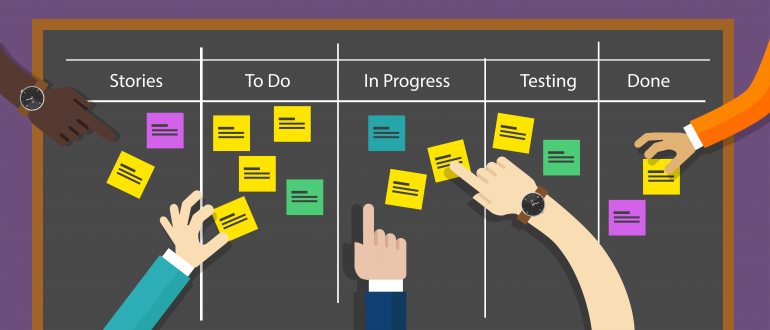
Asana and Trello are two leading solutions often featured on best project management software lists. And for good reason. Both tools share several critical features any project management software should have, including task management and simple team collaboration.
Although Asana and Trello are similar in their ability to help tech teams manage projects, they’re a bit different in the execution. We’ll compare and contrast these two tools based on key project management features. Note: For this comparison, we’ll be diving into the Premium versions of Asana and Trello, as they are recommended for team use.
SEE: Asana vs monday work management: Which is best for your business in 2023? (TechRepublic)
Jump to:
- What is Asana?
- What is Trello?
- Asana vs. Trello: Key features
- Asana vs. Trello features comparison
- Pricing
- Asana vs. Trello: Which to choose?
What is Asana?

Asana is a cloud-based project management software focused on task management and team collaboration. The key feature of Asana is the ability to break down team goals into manageable projects and tasks while staying up to date on goal progress along the way.
What is Trello?

Trello is a highly visual project management tool where key team projects take center stage. Using Trello, teams create kanban-style boards (much like old school sticky notes) to see all of their current projects at a glance in one view, including current projects, upcoming projects and beyond.
Asana vs. Trello: Key features
The best project management tools come with a wide range of features teams can use to manage projects in their own unique way. However, some features are non-negotiable for any project management tool. For this comparison, we used the following key features to see just how Asana and Trello compare to one another:
- Project planning
- Templates
- Task management
- Team collaboration
- Integrations
Asana vs. Trello features comparison
Project planning
Both Asana and Trello enable teams to effectively plan projects. However, there are some key differences. Namely, Trello focuses on kanban-style planning while Asana does not.
In Asana, each team has the ability to create new projects, a critical building block of the Asana workflow. Once a new project is created, tasks and subtasks can then be organized into separate sections. This enables teams to break projects down into specific stages or sequences, depending on their needs.
Teams can also view projects using three different modes: List view, Boards and Timeline. In the List view, tasks are simply displayed in a list based on priority, and in Boards, teams can visualize tasks by stage. Perhaps the most functional view for project planning is Timeline, where tasks are displayed as a map, allowing teams to see a full snapshot of the life cycle of a project.
In Trello, emphasis is placed on the Trello board, which is a kanban board. Many organizations that use this style of planning gravitate to Trello for this functionality alone. Each new project is broken down into a single board. Inside that board, teams can add in specific tasks, known as cards.
Trello also offers Timeline View, which teams can use to see project progress. Drag-and-drop functionality inside Timeline View simplifies the process of making changes to projects quickly.
Templates
Template boards are the quick and easy way to sidestep “analysis paralysis” and get projects underway by using tested, proven effective workflow processes. Users of both Trello and Asana can create these or find countless prefabricated configurations to employ.
Creating or finding Trello kanban-style templates is easy. Trello has a vast template menagerie covering pretty much every possible use case, and creating a template is easy via the sidebar menu, which also allows users to to add co-creators and share internally or with the Trello community at large.
Among popular options are a template for a team health kanban board, which lets team members collaborate on physical and emotional health tracking; a blog content schedule board; an order fulfillment template; a Lean Canvas board for simplifying business plans; and a remote team hub template for managing remote collaborates.
Starting at the premium level, users can access Asana’s library of over 50 templates for commercial applications in areas like marketing, IT and product design. Like Trello, Asana also lets users create their own template or turn a board into a template through fairly simple menu options. Templates are easy to access via the menu bar, one tab over from Asana’s templates, so users have multiple options.
Task management
Both Asana and Trello enable teams to add endless tasks to projects. In Asana, these tasks are referred to as just tasks, while in Trello, tasks are known as cards. Both tools enable teams to check tasks as completed, schedule tasks and assign tasks to other users. However, there are a few differences in capabilities.
For example, in Asana, teams can mark tasks as dependent on other tasks to better manage their workflows. Currently, Trello doesn’t offer this functionality out of the box. Asana also offers the ability to make tasks repeat. And while Trello does offer this functionality via the Repeater Power Up (Trello’s name for app integrations), it doesn’t come ready for use.
Team collaboration
Easy team collaboration is critical for moving projects forward. And both Asana and Trello deliver. Asana and Trello feature the ability to create teams for projects. This ensures the right people see the right projects and tasks. Both tools also enable teams to discuss tasks and projects, add attachments and tag other users in comments.
Integrations
A solid project management tool should offer third-party integrations to help teams connect their workflows. Luckily, both Asana and Trello offer a wide range of integrations to choose from. In Trello, these integrations are called Power-Ups.
Another great feature of both Trello and Asana is the ability to create apps and Power Ups using application programming interfaces. For teams that need specific functions, this is a welcome option.
Pricing
Asana Premium and Trello Premium are very similar in price. Asana Premium costs $10.99 per user per month, billed annually, and Trello Premium costs $10.00 per user per month, also billed annually.
Both also offer a free, entry-level option, which Asana categorizes as their package for small teams just getting started with project management. While Asana does not offer a pricing level above its free-to-use tier (but below its most popular premium package), Trello does, at $5 per user, per month.
| Pricing tier | Asana | Trello |
|---|---|---|
| Basic | — | $5 per user per month |
| Premium (core product) | $10.99 per user per month | $10 per user per month |
| Business/Enterprise | $24.99 per user per month | $17.50 per user per month |
Asana vs. Trello: Which to choose?
The choice between Asana or Trello comes down to specific team needs. For smaller teams that are looking for a simple, visual, kanban-style of project management, Trello might be a good fit. Yet, for larger teams who need more niche features such as task dependencies, Asana might be best.
Editor’s Note: The original reporting for this article was by Brenna Miles and was later updated by Karl Greenberg.








